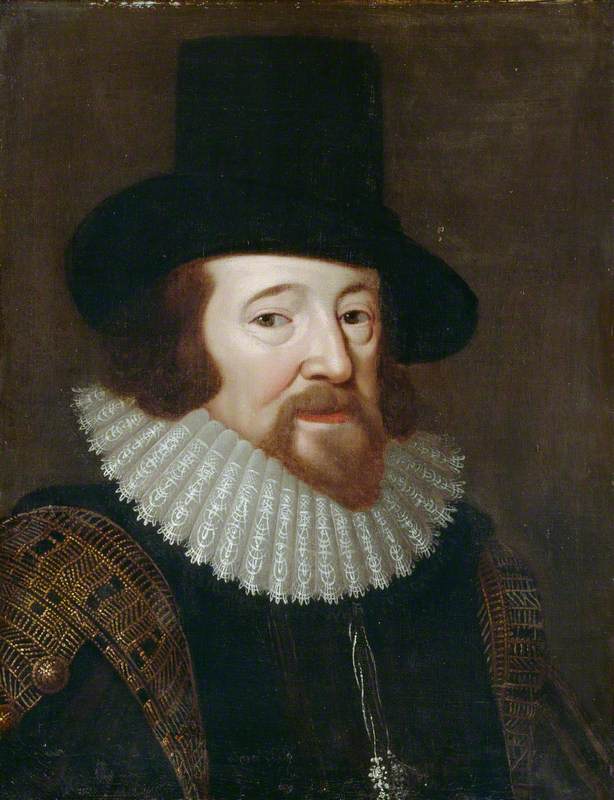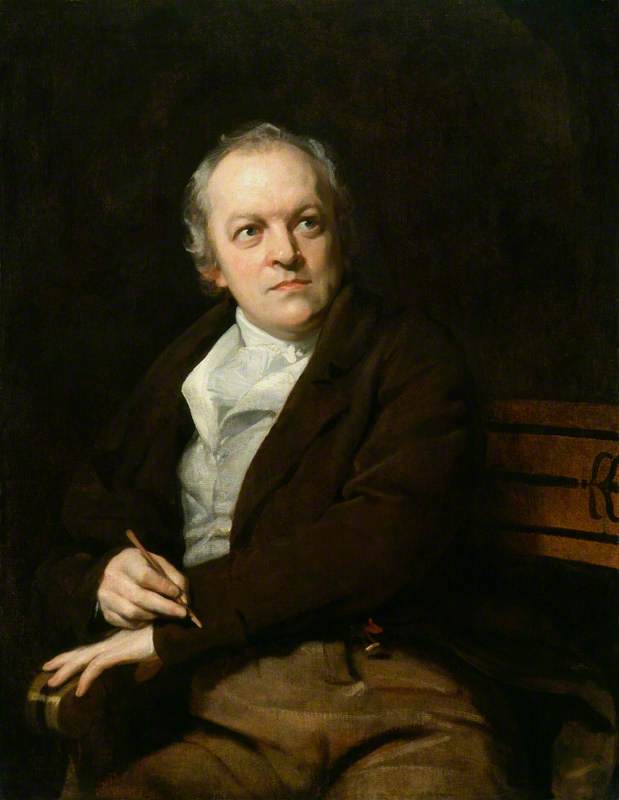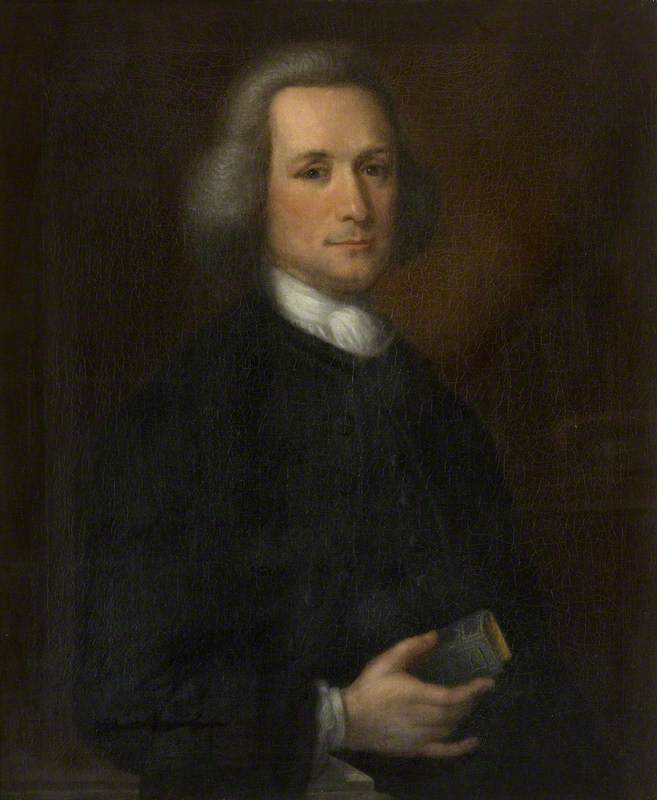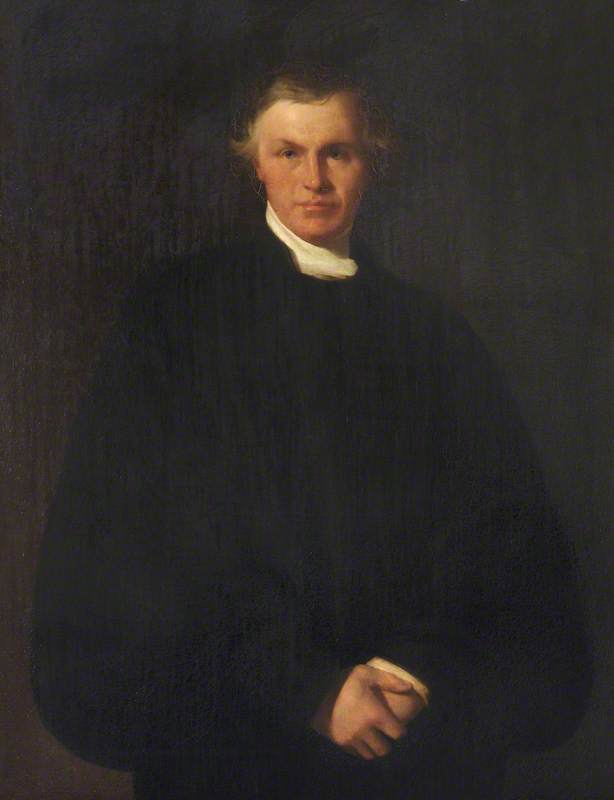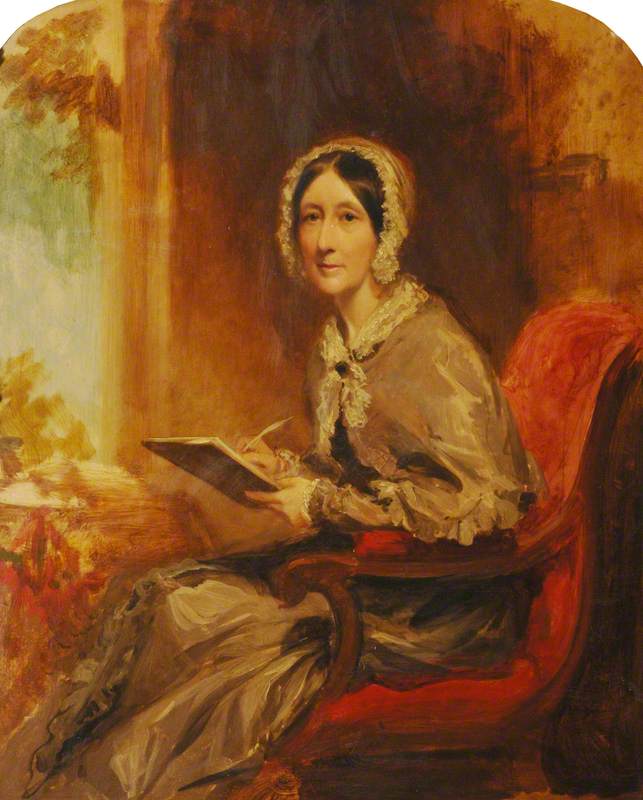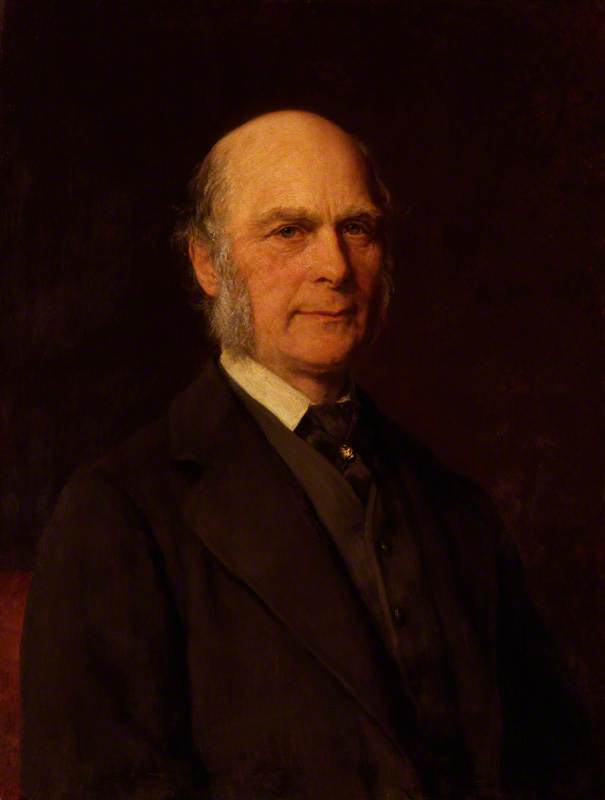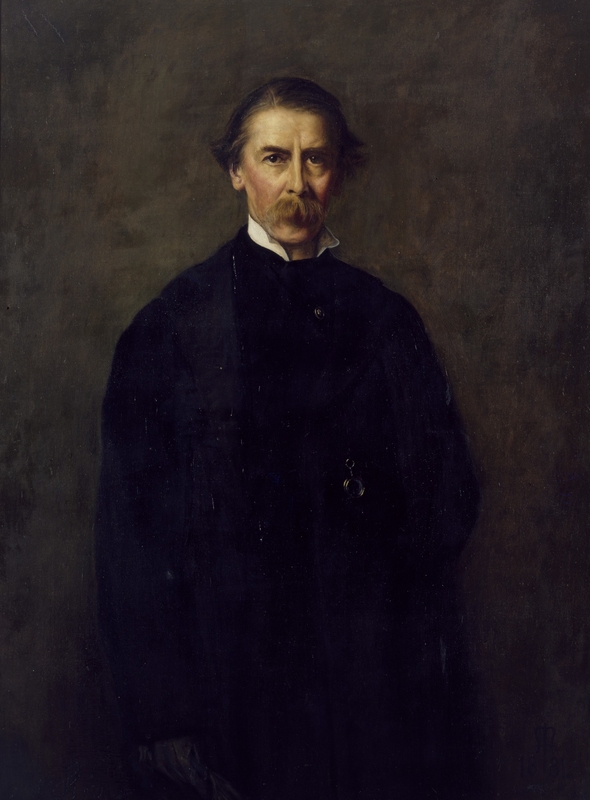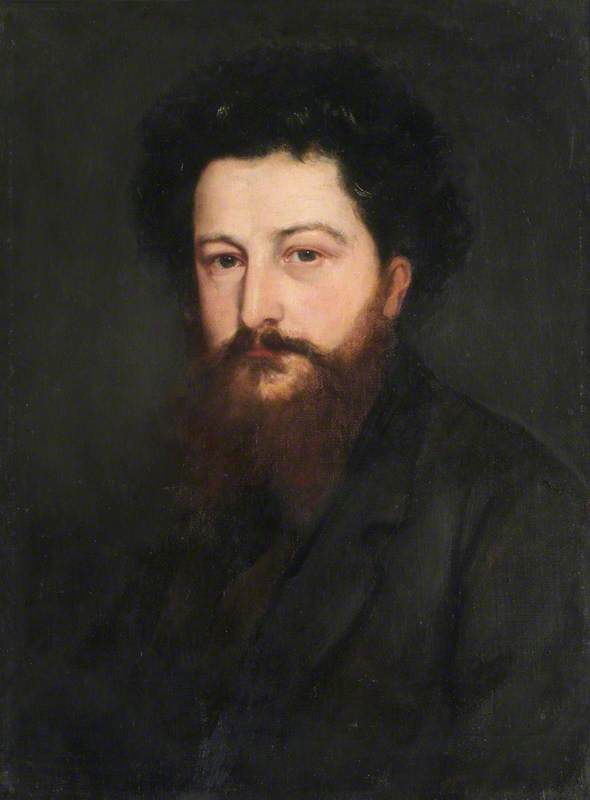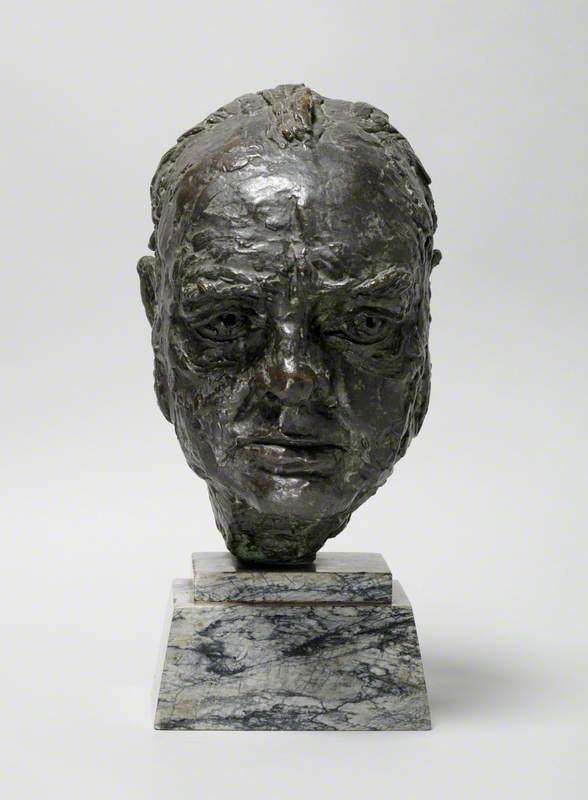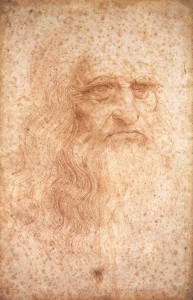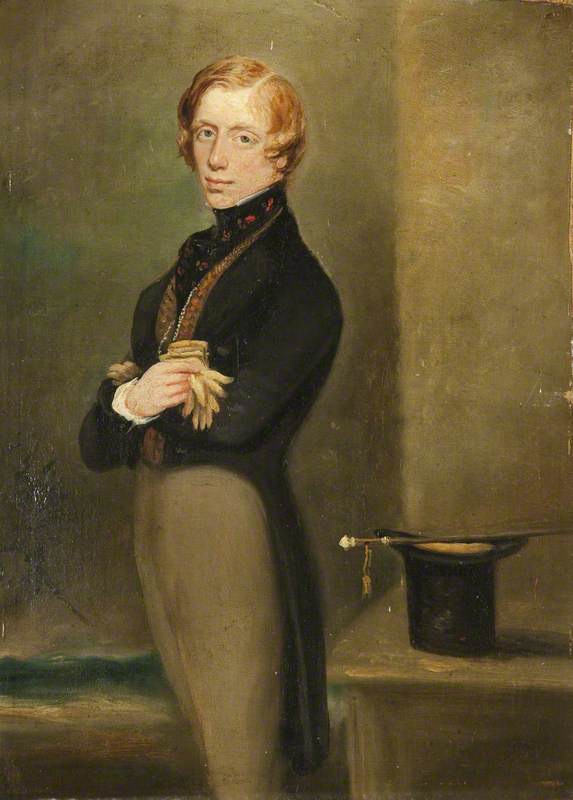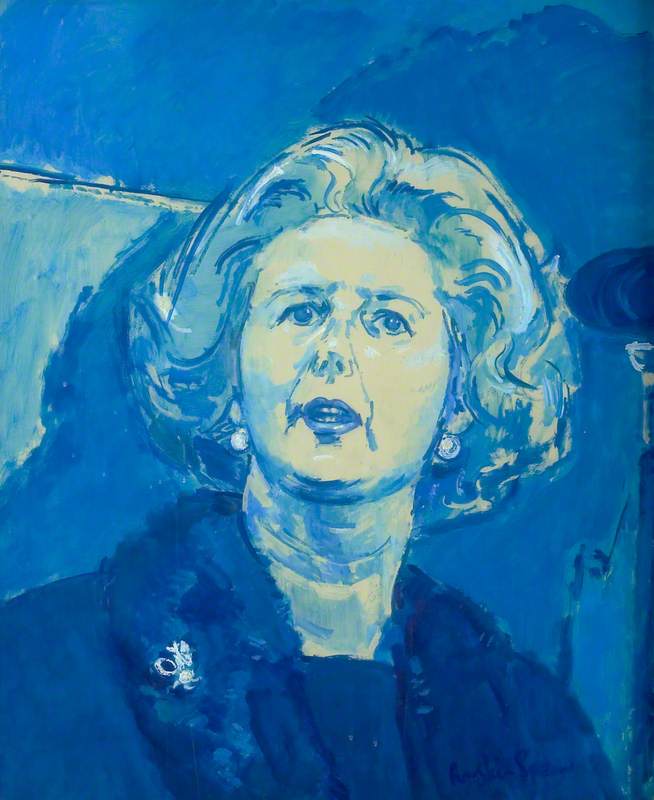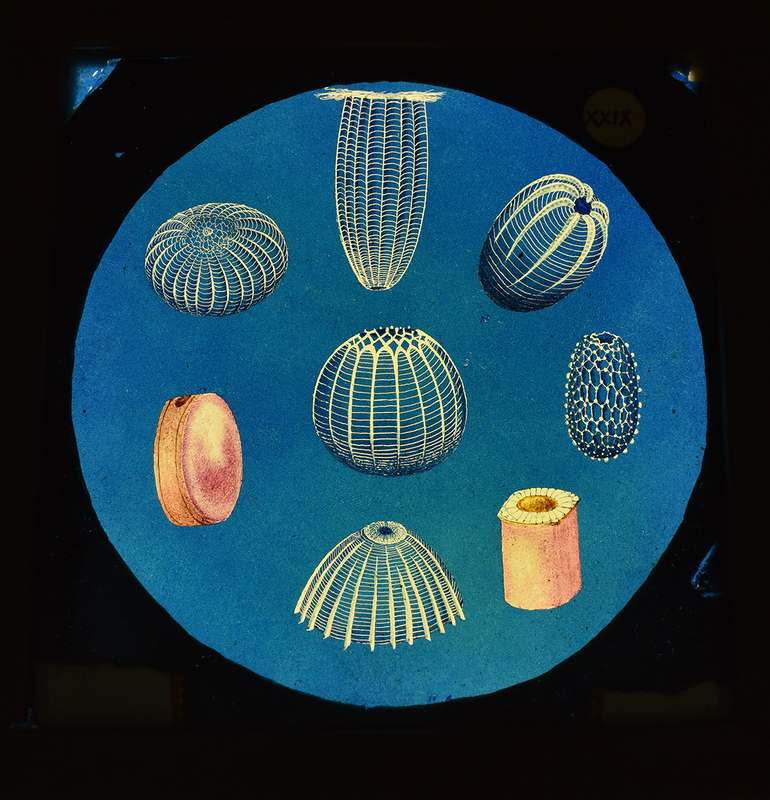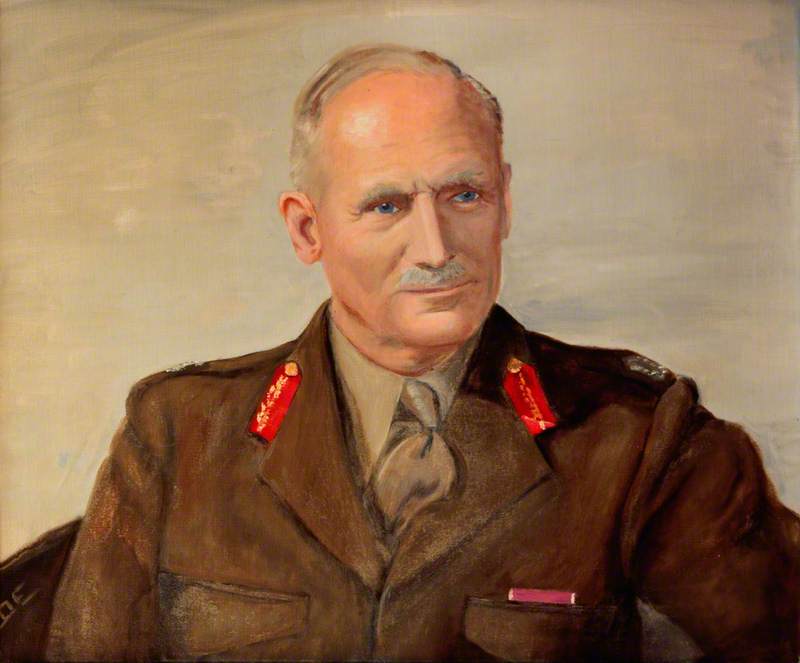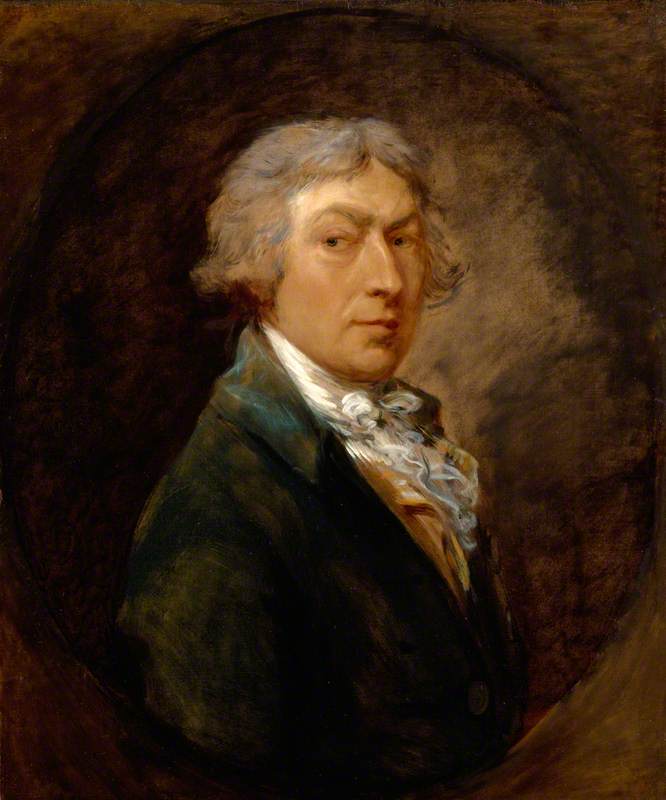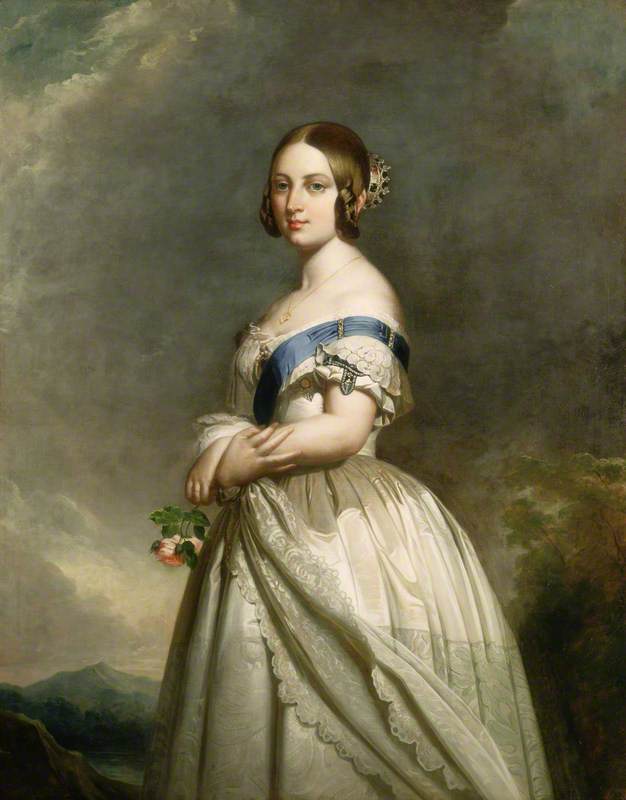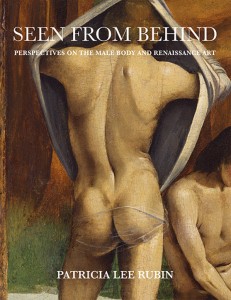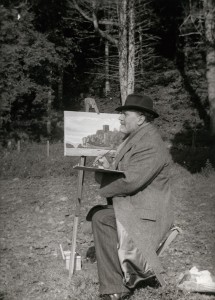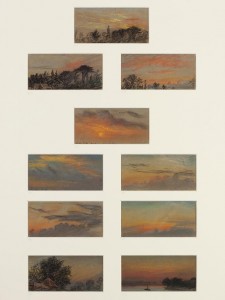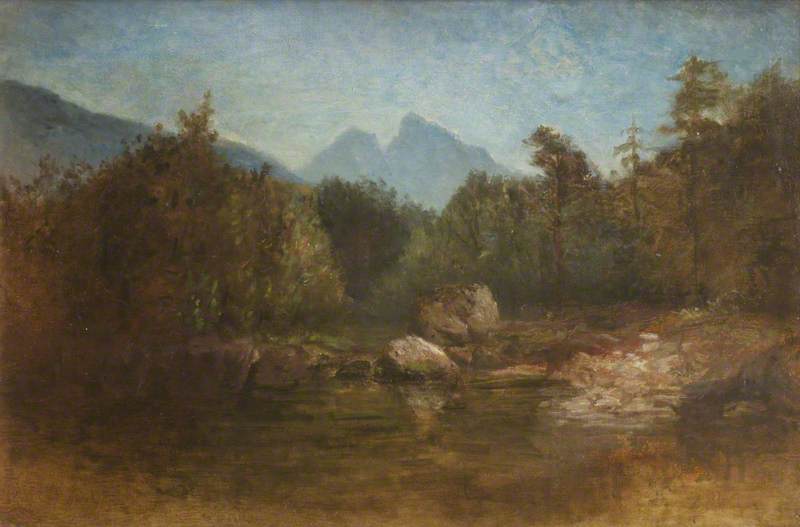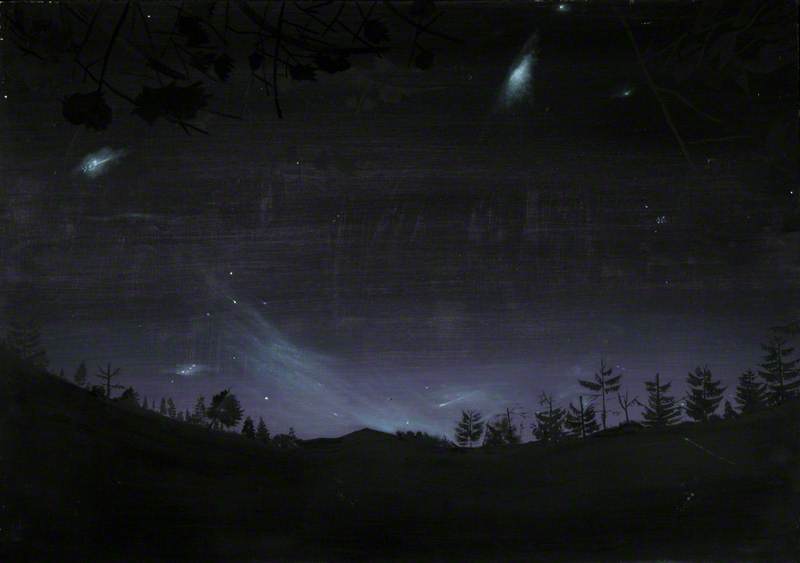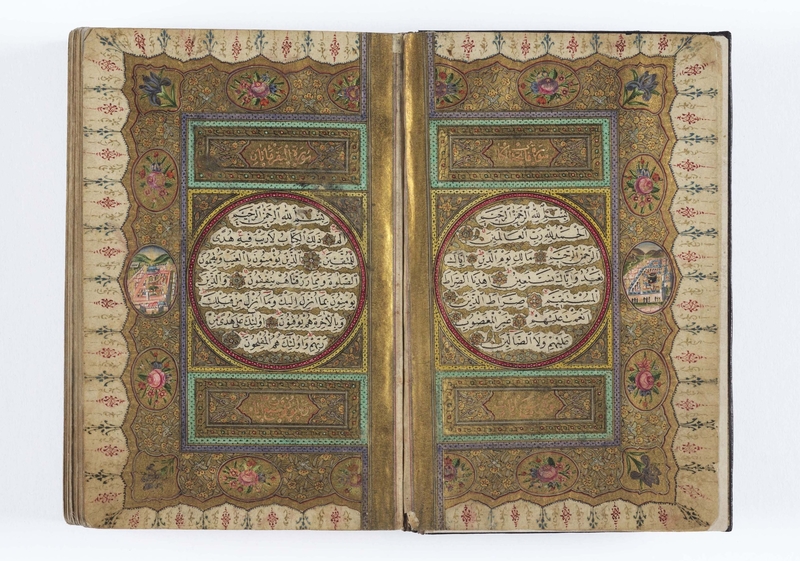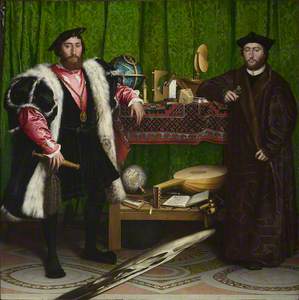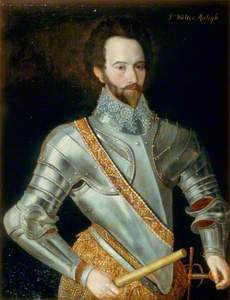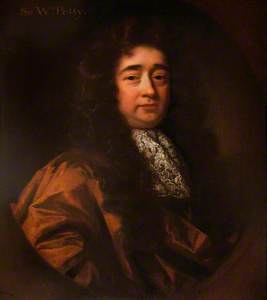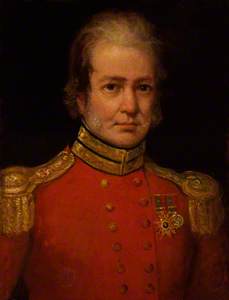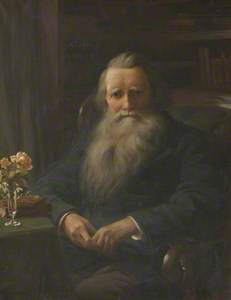We all know that Leonardo da Vinci was a many-sided genius. He had an exceptional versatility which allowed him to excel in multiple, seemingly unrelated fields. In the Western mind at least, he is still considered the archetypical polymath.
Portrait of a Polymath – D'Arcy Thompson's Daybook
2008
Will Maclean (b.1941) 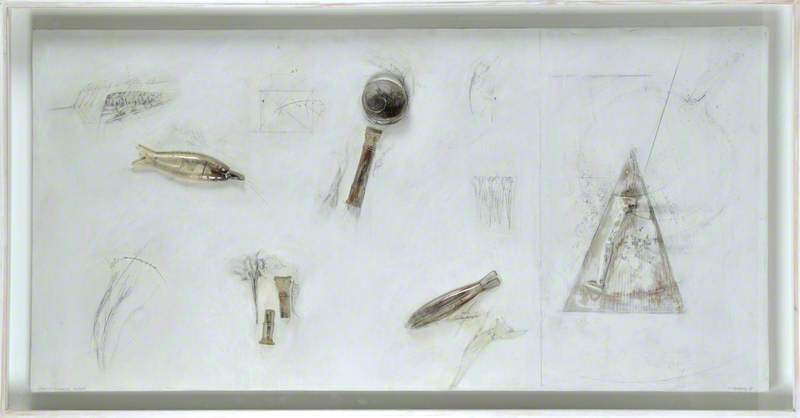
But what of Britain's very own 'Leonardos'? On the 500th anniversary of Leonardo's death, an opportunity arises to reflect on 500 years of polymathy in Britain through artwork in the country's collections.
In Renaissance Britain, the ideal of the polymath or the 'Renaissance Man' was exemplified by Hans Holbein's painting The Ambassadors.
Jean de Dinteville and Georges de Selve ('The Ambassadors')
1533
Hans Holbein the younger (c.1497–1543) 
Through its objects, the painting depicted the model courtiers as being rounded, cultured individuals with a knowledge of geography (the globes), astronomy (the sundial and torqetum), mathematics (the quadrant and the arithmetic book), art (mosaics and textiles), music (Lutheran psalm book) and theology (religious attire and bible).
Francis Bacon (1561–1626)
Francis Bacon one of the earliest intellectual polymaths as the royal court. Known for his quote 'I take all knowledge to be my province', he was known to excel as a lawyer, philosopher of science, theologian, statesman and litterateur who some believe to be the true author of many of Shakespeare's works.
Walter Raleigh (c. 1552–1618)
Sir Walter Raleigh (c.1552–1618), Soldier, Sailor, Poet and Writer
c.1595
British School 
Walter Raleigh typified the English Renaissance Man of the Elizabethan court. He served as a soldier at three different points in his life, and was integrally involved in the English defence against the Spanish Armada. As a navigator and explorer, Raleigh organized and led expeditions to the Americas where he founded early colonies. He wrote extensive accounts of his travels and expeditions as well as treatises on politics, warfare, philosophy, invention, the Royal Navy, trade, commerce and botany. He also wrote the famous The Historie of the World, as well as a collection of poetry.
Isaac Newton (1642–1727)
Isaac Newton (1642–1727), Fellow, Natural Philosopher and Mathematician
1710/1711
James Thornhill (1675/1676–1734) 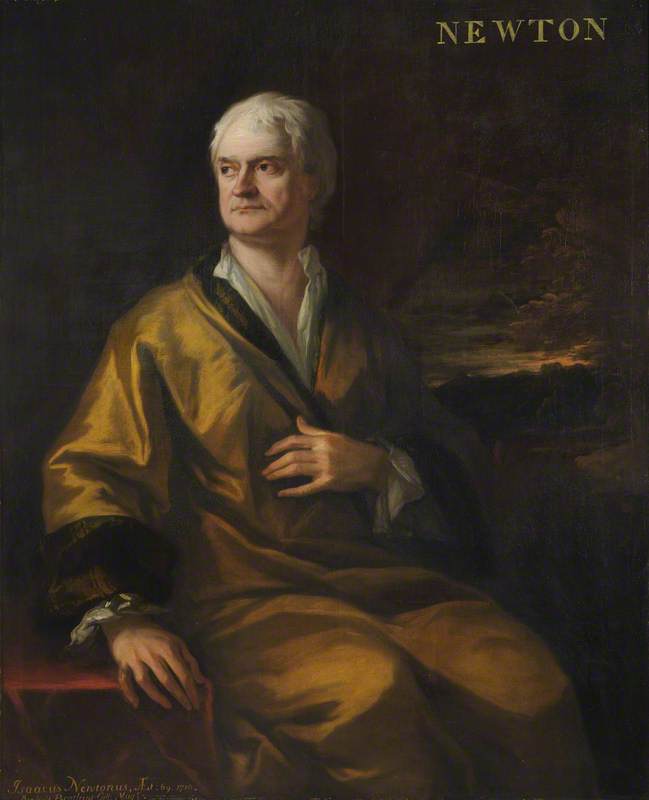
Isaac Newton's contributions to science and philosophy are as diverse and influential as any scientist in recorded history. As a mathematician, he (sharing the credit with Gottfried Wilhelm Leibnitz) developed differential and integral calculus, demonstrated the generalised binomial theorem, formulated a method for approximating the roots of a function and contributed to the study of power series. As an all-round scientist, he practically invented (at least in the Western understanding of it) the discipline of physics, built the first practical reflecting telescope, developed a theory of colour, formulated an empirical law of cooling and studied the speed of sound. And yet he probably wrote more on Christian theology and mystical philosophy than he did on science.
Robert Hooke (1635–1703)
Robert Hooke (1635–1703)
(imagined posthumous portrait) 2010
Rita Norah Greer (b.1942) 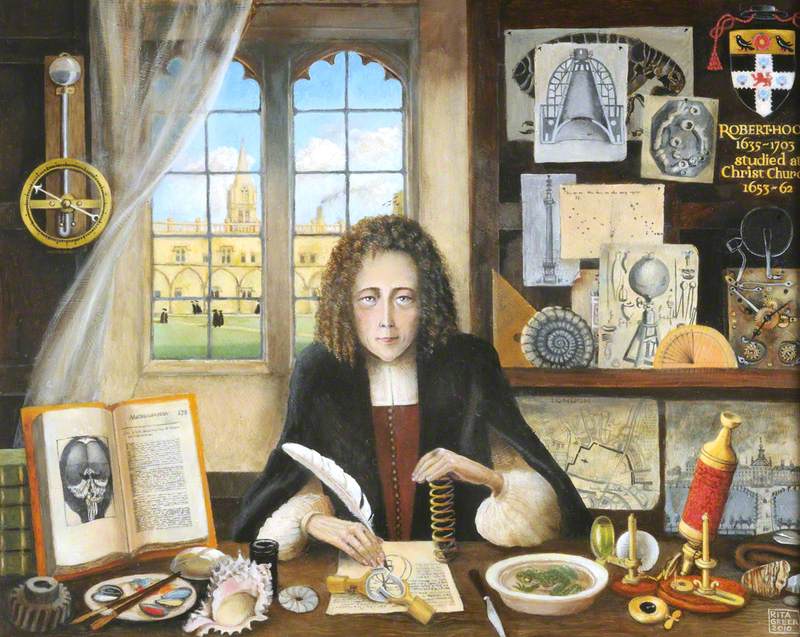
People often confuse Newton's painting with that of Robert Hooke, dubbed by historian Allan Chapman as 'England's Leonardo' because of his contributions to many scientific disciplines including astronomy and gravitation, aerodynamics, mechanical engineering, combustion, psychology and microscopy. He used his varied expertise in the sciences to support his artistic talent as an architect while designing important buildings in London following the fire of 1666.
William Petty (1623–1687)
William Petty is known today for his contributions to economics – namely the theory of value, foreign trade and fiscal reform. Lesser known is that he was also Gresham Professor of Music, a trained medic who taught anatomy at Oxford, a writer on naval architecture and a member of parliament.
William Blake (1757–1827)
William Blake was one of the few from the working class that emerged as a recognised polymathic genius. He was one of the great political activists and religious commentators of his time, but he is especially known as one of the most important painters and poets in British history. His ideas, known for their philosophical and mystical themes, were exemplary of the Romantic age and expressed in both visual and literary form.
Joseph Priestley (1733–1804)
Joseph Priestley was a church minister, who in addition to being one of the most respected theologians of his time, also made significant contributions to chemistry (soda water), language (English grammar), physics (electricity), history (timelines and charts) and philosophy (metaphysics).
Thomas Young (1773–1829)
Thomas Young (1773–1829)
(copy after Thomas Lawrence) c.1822
Henry Perronet Briggs (1791/1793–1844) 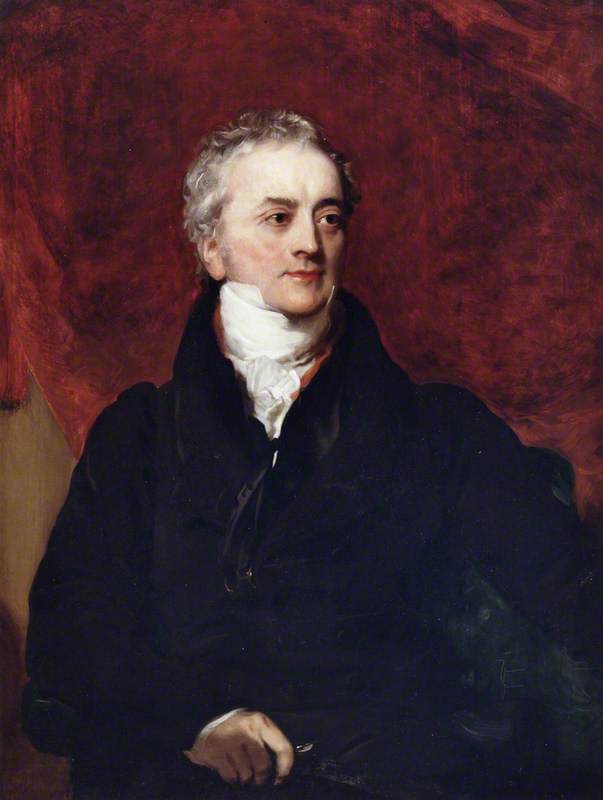
Thomas Young, described by his biographer as 'the last man to know everything', set up his own medical practice, published important works on physiology, optics and physics and developed the wave theory of light as professor of physics. Perhaps more interestingly, he was a polyglot who studied the phonetics of over 400 languages and famously deciphered Egyptian hieroglyphics on the Rosetta Stone (although this was fully completed later by Champollion). He also created a method of tuning musical instruments, known today as the Young Temperament.
William Whewell (1794–1866)
William Whewell, Master of Trinity College and author of the third Bridgewater treatise became a pioneering figure in the debate on science versus religion. A leading scientist in his own right, Whewell published works on physics, geology and astronomy, including Of the Plurality of Worlds, in which he argued against the probability of life on other planets. He was also known as an expert in political economy, Gothic architecture and philosophy (inductive reasoning and ethics).
Mary Somerville (1780-1872)
Mary Somerville popularized many fields of science with her appealing writing style and then began to produce a wide variety of scientific works of her own including On the Connexion of the Physical Sciences, Physical Geography, and Molecular and Microscopic Science. She also advanced in mathematics, coining the term 'variables' used in algebra. She became one of the first women to be admitted to the Royal Astronomical Society and was dubbed the 'Queen of nineteenth-century science' by London's Morning Post on her death. She was also an acclaimed artist: the painting above is her self portrait.
James Atkinson (1780–1852)
James Atkinson was a surgeon and solider in the British army. He was also a trained and talented artist who chronicled his military expeditions through a series of impressive sketches and paintings of Afghanistan and the Punjab, which he later published. Several of his works, including a self portrait, are still exhibited in the National Portrait Gallery in London. Atkinson was also renowned journalist, Editor of the Calcutta Gazette, one of the earliest English language newspapers in India, and became editor of the new Government Gazette and later Superintendent of the Press. As a scholar and linguist, who translated Persian classics such as the Sha Nameh and Laili and Majnun into English, he was also a gifted poet in his own right.
Richard Francis Burton (1821–1890)
Sir Richard Francis Burton
1872–1875
Frederic Leighton (1830–1896) 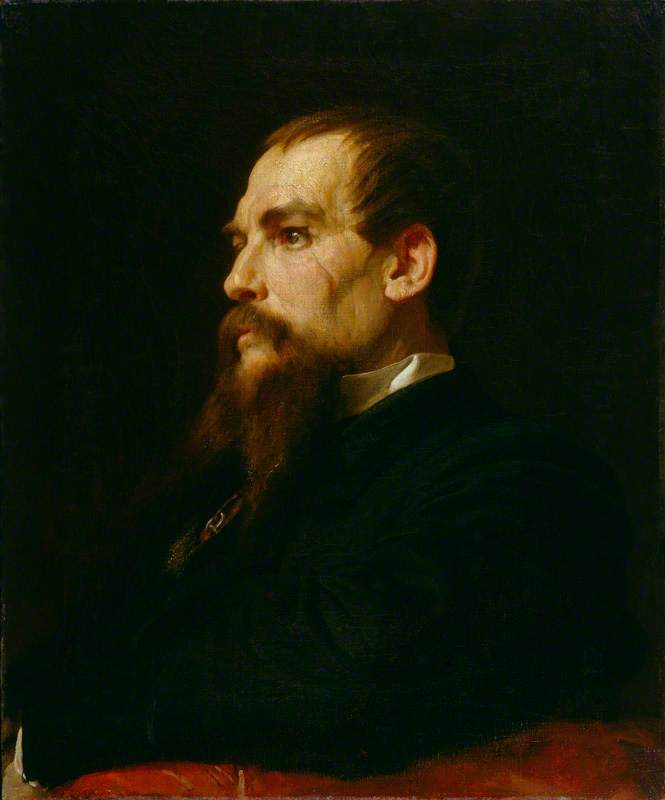
Richard Francis Burton was a soldier, explorer and diplomat. He underwent various breakthrough expeditions including making the Hajj pilgrimage in disguise as a South Asian pilgrim, discovering the great lakes of the Somali Country and Congo, and searching for the ultimate source of the Nile. He wrote numerous accounts of his travels and became one of the greatest polyglots of the nineteenth century, reportedly conversant in 40 languages and dialects. He used his language skills to translate the Kama Sutra from Hindi and the Arabian Nights from Arabic, but also wrote treatises on anthropology, fencing and falconry. 'No man can be all things at once, no matter how hard he tries', his biographer Byron Farewell wrote, 'but no man tried harder than Richard Francis Burton'.
John Ruskin (1819–1900)
John Ruskin (1819–1900), in His Study at Brantwood
1897
William Gershom Collingwood (1854–1932) 
John Ruskin wrote several books on architecture, won the prestigious Newdigate Prize for poetry at Oxford, wrote papers on geology and botany, penned a critique of Adam Smith's A Wealth of Nations, and became the leading art critic and historian of his generation – his multi-volume masterpiece Modern Painters is still considered one of the best works of art criticism of modern times. He was also a visual artist and political thinker in his own right with massive influence in both artistic and political circles.
Florence Nightingale (1820–1910)
Florence Nightingale (1820–1910)
1868
George Frederic Watts (1817–1904) 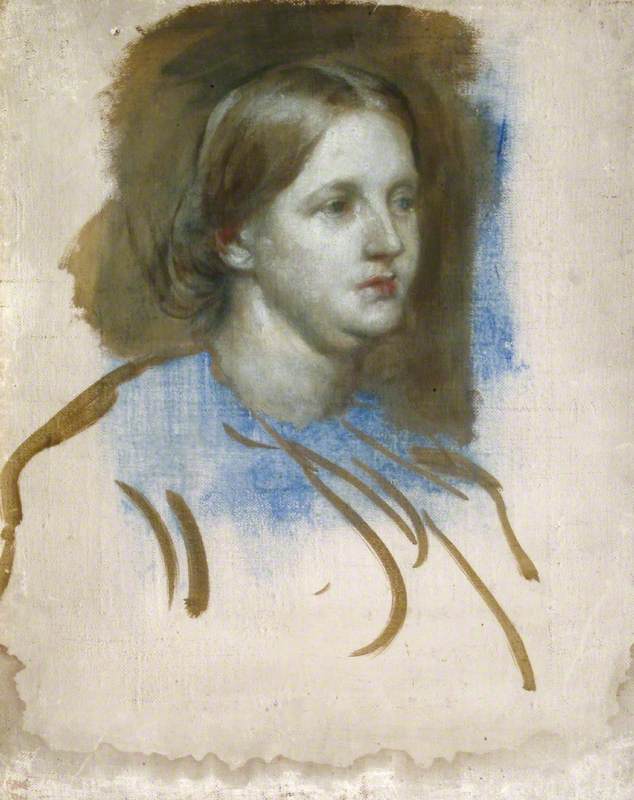
Florence Nightingale laid the foundation of professional nursing with the establishment of her nursing school at St Thomas' Hospital in London – the first secular nursing school in the world. An unusually well-educated woman for the time, Nightingale was a prodigious mathematician who helped popularize the graphical presentation of statistical data and is credited with developing a form of the pie chart now known as the Nightingale Rose diagram. She was also an exceptionally versatile writer, making contributions to the fields of medicine, feminism, human development, theology, mysticism, mathematics and more. Her writings were posthumously published as the 16-volume Collected Works of Florence Nightingale.
Francis Galton (1822–1911)
Francis Galton wrote The Art of Travel and used his observations in different cultural and geographic environments to draw insights into – and make extraordinary breakthroughs in – many scientific disciplines including meteorology (the anti-cyclone and the first popular weather maps), statistics (regression and correlation), psychology (synaesthesia), biology (the nature and mechanism of heredity), and forensics (fingerprints). Galton pioneered a since-discredited eugenics movement in Britain that attempted to prove the intellectual superiority of the white Caucasian race.
Henry Thompson (1820–1904)
Henry Thompson was one of the leading surgeons of his time who counted Napoleon III, Emperor of France, as one of his patients. He established and maintained a private astronomical observatory and was an accomplished painter, novelist and gastronome. His other pursuits include being one of the world's leading rare porcelain collectors, poultry farming and later in life he wrote a book on the motorcar.
Charles Lutwidge Dodgson (1832–1898), also known as Lewis Carroll
Charles Lutwidge Dodgson (Lewis Carroll) (1832–1898)
1899
Hubert von Herkomer (1849–1914) 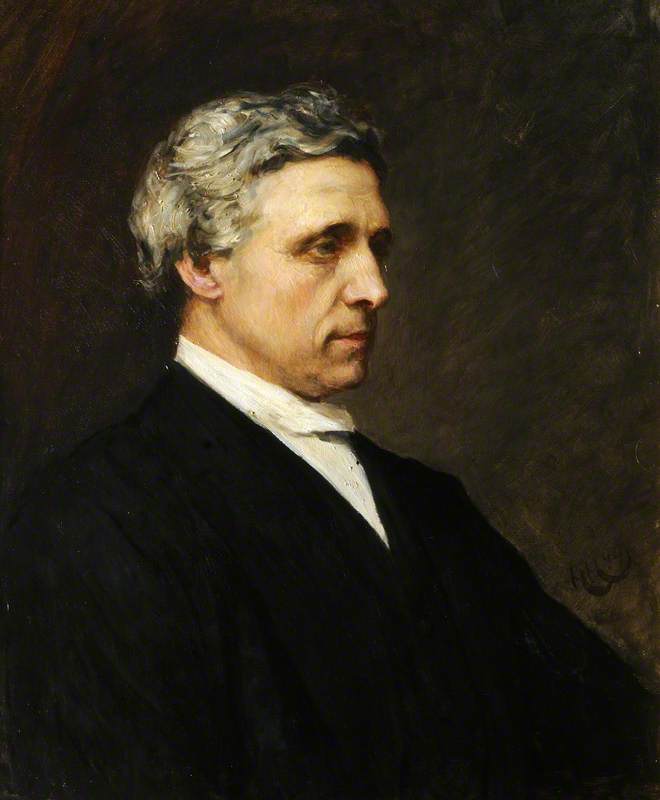
Charles Dodgson was a clergyman, mathematician, philosopher and photographer who produced over 3,000 images, including portraits of notable individuals such as artist Dante Gabriel Rossetti, poet Lord Tennyson, scientist Michael Faraday and actress Ellen Terry. However, we know him as Lewis Carroll, the author of short stories, poems and novels, most famously Alice in Wonderland. Interestingly, Dodgson was also a prolific inventor, who developed new forms of stationery such as the nyctograph (a note-taking tablet for the dark) and double-sided tape, word-games and brain-teasers, as well as various rules for sports games, political elections and other processes.
William Morris (1834–1896)
A pioneer of the Arts and Crafts Movement, William Morris became a pattern designer for wallpapers, ceramic tiles, stained glass, textiles and other interior decorations and also gained expertise in textile weaving, dyeing, printing and embroidery, and oil painting (his La Belle Iseult is in the collection of London's Tate). He also designed typefaces and book decorations, ultimately starting his own publishing house, the Kelmscott Press, which during its short lifespan became one of the most reputed specialist presses in the country. Inspired by the mediaeval writers he published, Morris himself made tremendous contributions to the world of literature – he was one of the first of the Pre-Raphaelite poets and a pioneer of the fantasy fiction genre. He was also one of the leading socialist political activists of his time. When he died at age 62, his physician, declared that the cause was 'simply being William Morris, and having done more work than most ten men'.
Winston Leonard Spencer-Churchill (1874–1965)
Sir Winston Churchill (1874–1965)
1946
Frank O. Salisbury (1874–1962) 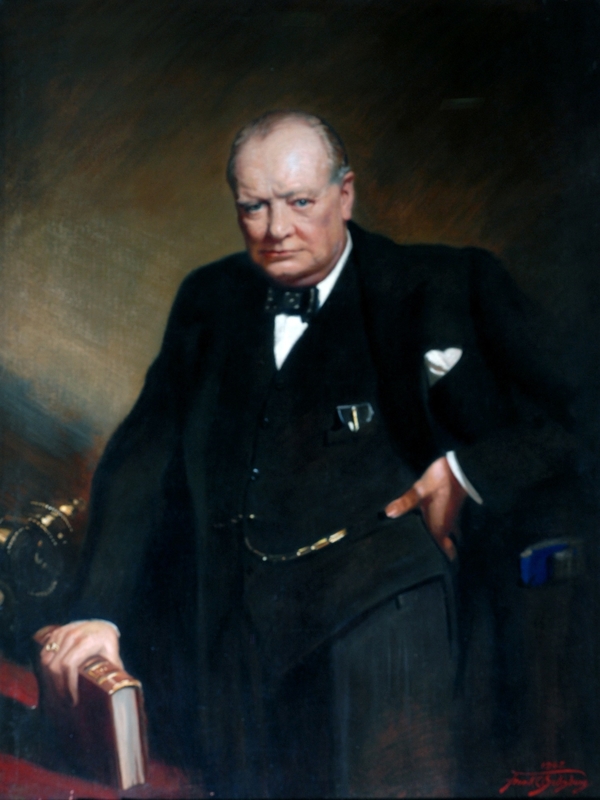
Winston Churchill's accomplishments as a leader are so revered that they have often overshadowed the fact that he was also an accomplished soldier, artist and scholar – a 'many-sided genius' according to his Queen. He was also a prolific writer who won the Nobel Prize for Literature in 1953; he wrote a novel, two historical biographies, three volumes of memoirs, several histories and numerous newspaper articles as a war correspondent. As an oil painter, he produced over 100 works, mostly impressionist landscapes, which have been exhibited worldwide. He even wrote a treatise on painting.
Charles, Prince of Wales (b.1948)
Charles, Prince of Wales has demonstrated multiple interests and accomplishments that recently won him the Palazzo Strozzi 'Renaissance Man of the Year Award'. He was honoured for his work related to world religions, architecture, education, sports, art, agriculture, nature and literature. When he recently won GQ 'Man of the Year Award for Lifetime Achievement', he said, 'I find there are too many things that need doing or battling'.
Charles III (b.1948), when HRH The Prince of Wales
2000
Richard Stone (b.1951) 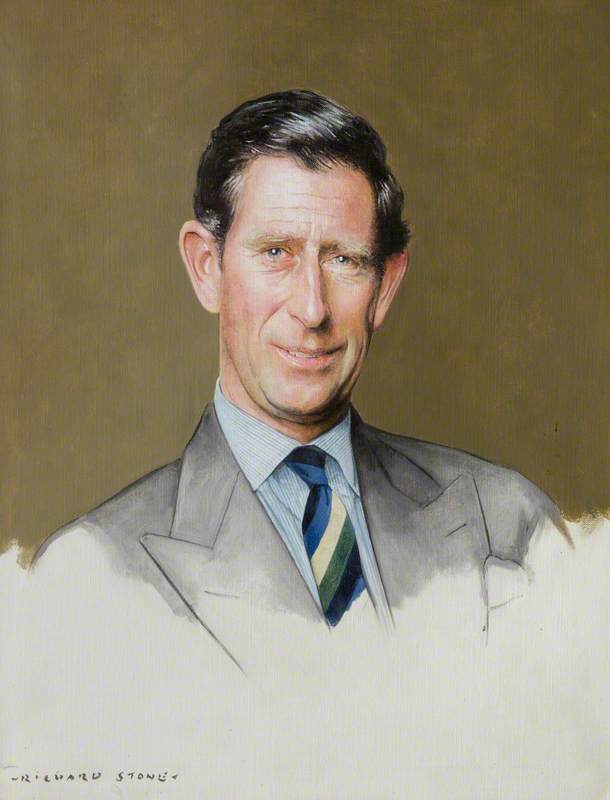
Polymaths are clearly among the most influential figures in British history. Why is it then, that our education systems still encourage narrow-focused, single-minded, life-long 'micro-specialists'? Why is it that our employers are generally suppressive of the multiple talents and interests among their human resources? On the 500th anniversary of Leonardo da Vinci's death, let us rediscover and celebrate the many-sided potential of all humans. Let this be the year of the polymath.
Waqās Ahmed, author of The Polymath (Wiley 2019), Artistic Director at The Khalili Collections and founder of the DaVinci Network
